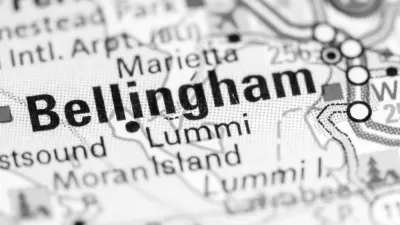Two dams have been removed from watersheds in Washington State in as many months.

"Washington’s dam-busting summer is still rolling, with two more dams coming down on the Pilchuck River, opening 37 miles of habitat to salmon for the first time in more than a century," reports Lynda V. Mapes.
"The $2 million dam removal project is a collaboration between the City of Snohomish and Tulalip Tribes, and will benefit multiple species of salmon, including threatened chinook salmon, crucial food for endangered southern resident killer whales," adds Mapes.
"It’s the state’s second dam teardown project in two months. In July, the city of Bellingham blew up its Nooksack Diversion Dam on the Middle Fork of the Nooksack River, opening 16 miles of habitat for salmon, including chinook." Planetizen picked up news of the Bellingham dam removal, noting the long precess that enabled that historic dam removal.
Maps provides more background on how the dam removal on the Pilchuk River came to be. Hint: it came down to simple question of cost.
A separate article by Tara Lohan, written in 2018, details the lessons in ecosystem restoration that have emerged from another dam removal in Washington State—the dam removal on the Elwha River, which is considered the world's largest dam removal project.
Now two more watersheds in the state are hoping for the kind of recovery of critical species as has been seen on the Elhwa River since the 105-foot-tall Elwha Dam and 210-foot-tall Glines Canyon Dam were removed in 2011 and 2014, respectively.
FULL STORY: Another Washington dam removal — and 37 more miles of salmon habitat restored

Alabama: Trump Terminates Settlements for Black Communities Harmed By Raw Sewage
Trump deemed the landmark civil rights agreement “illegal DEI and environmental justice policy.”

Study: Maui’s Plan to Convert Vacation Rentals to Long-Term Housing Could Cause Nearly $1 Billion Economic Loss
The plan would reduce visitor accommodation by 25% resulting in 1,900 jobs lost.

Why Should We Subsidize Public Transportation?
Many public transit agencies face financial stress due to rising costs, declining fare revenue, and declining subsidies. Transit advocates must provide a strong business case for increasing public transit funding.

Paris Bike Boom Leads to Steep Drop in Air Pollution
The French city’s air quality has improved dramatically in the past 20 years, coinciding with a growth in cycling.

Why Housing Costs More to Build in California Than in Texas
Hard costs like labor and materials combined with ‘soft’ costs such as permitting make building in the San Francisco Bay Area almost three times as costly as in Texas cities.

San Diego County Sees a Rise in Urban Coyotes
San Diego County experiences a rise in urban coyotes, as sightings become prevalent throughout its urban neighbourhoods and surrounding areas.
Urban Design for Planners 1: Software Tools
This six-course series explores essential urban design concepts using open source software and equips planners with the tools they need to participate fully in the urban design process.
Planning for Universal Design
Learn the tools for implementing Universal Design in planning regulations.
Smith Gee Studio
Alamo Area Metropolitan Planning Organization
City of Santa Clarita
Institute for Housing and Urban Development Studies (IHS)
City of Grandview
Harvard GSD Executive Education
Toledo-Lucas County Plan Commissions
Salt Lake City
NYU Wagner Graduate School of Public Service




























